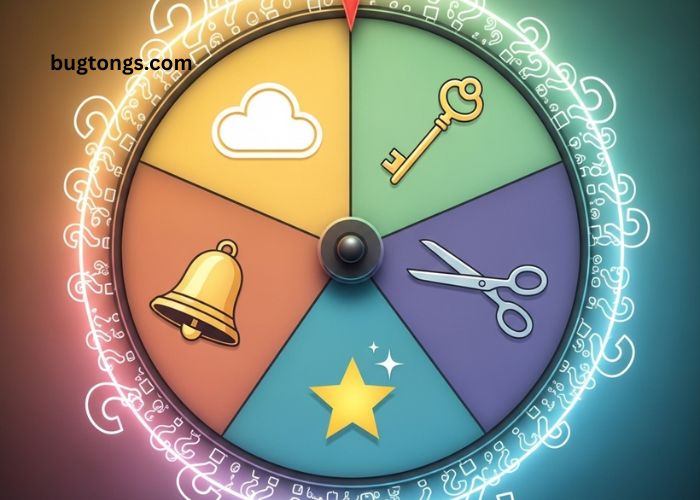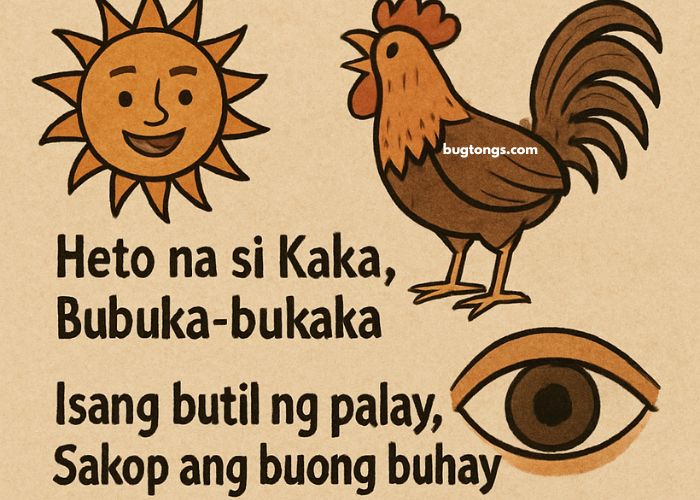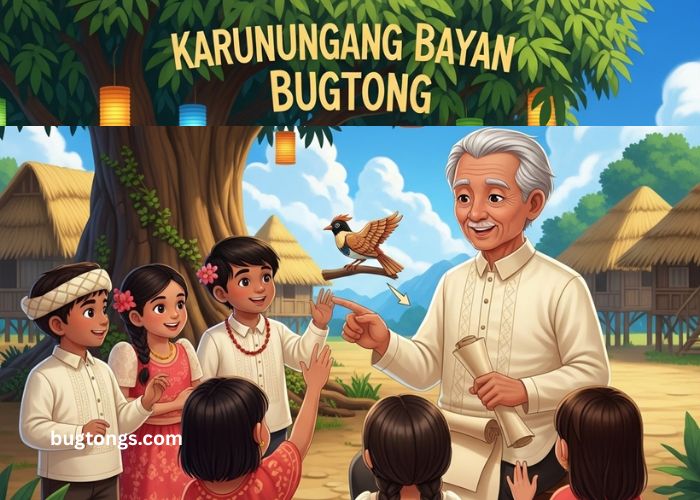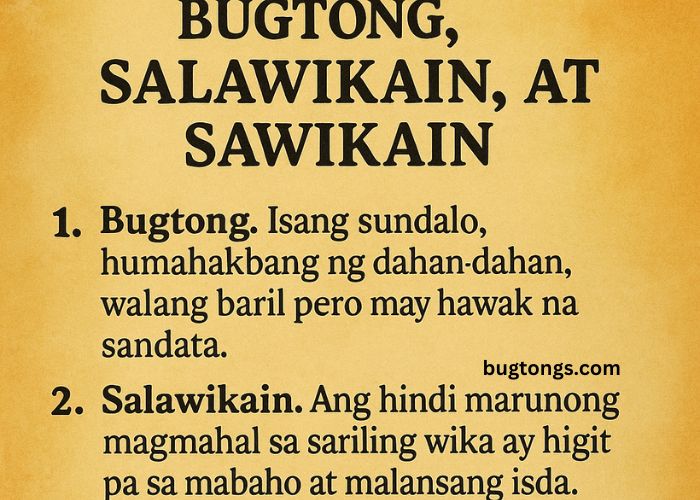Bugtong means riddle. It is a fun game in the Philippines. People ask a riddle and others try to guess the answer. It helps you think and learn new words. Many kids and even adults like bugtong. They are short, simple, and smart.
We will talk about the website “5 example of bugtong”. We will show you 5 riddles and tell you the answers. We will also tell you how bugtong helps kids. And we will tell you where you can use bugtong.
Key Points:
- Bugtong is a fun and smart game.
- It helps kids learn and think.
- You can use bugtong at school or home.
How Bugtong Help Us Learn
Bugtong is more than fun. It helps our brain grow strong. It makes us think hard. It makes us use our words. Kids can learn new ideas too. When we try to guess the answer, we use our mind. That is learning.
Let’s look at this riddle:
“May bintana, walang bubong. May pinto, walang sahig.”
(Has windows, no roof. Has door, no floor.)
Answer: Car (Kotse)
This is tricky, right? It sounds like a house, but it is not. It is a car! That is how bugtong makes us think.
We use bugtong to get better at:
- Talking
- Thinking
- Guessing
- Finding clues
Reminder: Let kids guess before giving the answer. This helps their brain grow.
Bugtong vs. Questions Chart:
| What It Is | Bugtong | Normal Question |
| Uses Imagination | Yes | No |
| Fun to Answer | Very fun | Not always |
| Good for Brain | Yes | Sometimes |
| Has Clues | Yes | No |
| Easy Words | Yes | Sometimes hard |
Bugtong is like a small puzzle. It is short but smart. It teaches kids to find meaning in words. That is why it is good.
Where You Can Use Bugtong
You can use bugtong anywhere. At home, in school, with friends, or online. It is fun for kids and adults. Bugtong can be a game, a lesson, or a contest.
Places to use bugtong:
- In the classroom: Your teacher can ask one bugtong every day.
- At home: You can ask your brother or sister to guess.
- Online: You can play bugtong on websites.
- In games: You can make a bugtong contest with friends.
- On stage: Some schools have bugtong shows!
Note: You can print your bugtong and make a wall board. Change the riddle every week.
Where You Can Use Bugtong Table:
| Place | How to Use It | Fun Tip |
| School | Ask one bugtong a day | Make it a classroom game |
| Home | Ask family to guess | Give small prizes |
| Online | Use bugtong apps or sites | Share answers with friends |
| Parties | Use as brain game | Add music or claps |
Bugtong is easy to play and does not need many things. Just say the riddle and let others guess.
Understanding 5 Example Of Bugtong
Let’s now look at 5 example of bugtong. These are fun and famous in the Philippines. Try to guess before looking at the answer.
- “Hindi tao, hindi hayop, kung uminom ay salup-salop.”
Not a person, not an animal, drinks a lot.
Answer: Banga (Jar)
- “Isang balong malalim, punong-puno ng patalim.”
A deep well, full of sharp things.
Answer: Bibig (Mouth)
- “Lumuluha walang mata, lumalakad walang paa.”
It cries but has no eyes. It walks but has no feet.
Answer: Ilog (River)
- “Buto’t balat, lumilipad.”
Just bones and skin, but it flies.
Answer: Saranggola (Kite)
- “May ulo, walang mukha. May tiyan, walang bituka.”
Has a head but no face. Has a tummy but no guts.
Answer: Palaka (Frog) - May bintana, walang bubong. May pinto, walang sahig.
(Has windows but no roof. Has door but no floor.)
Answer: Kotse (Car)
- Isang balong malalim, punong-puno ng patalim.
(A deep well full of blades.)
Answer: Bibig (Mouth)
- Lumuluha nang walang mata, lumalakad nang walang paa.
(Cries without eyes, walks without feet.)
Answer: Ilog (River)
- Buto’t balat, lumilipad.
(Bones and skin, but it flies.)
Answer: Saranggola (Kite)
- May ulo pero walang mukha, may tiyan pero walang bituka.
(Has a head but no face, has a tummy but no guts.)
Answer: Palaka (Frog)
- Hindi tao, hindi hayop, may ngipin pa rin.
(Not a person, not an animal, but it has teeth.)
Answer: Suklay (Comb)
- Baboy ko sa pulo, ang balahibo’y pako.
(My pig on the island has nails for hair.)
Answer: Langka (Jackfruit)
- Kaisa-isang plato, kita sa buong mundo.
(One plate, seen all over the world.)
Answer: Buwan (Moon)
- Ulan nang ulan, hindi mabasa ang tiyan.
(It rains and rains, but its tummy stays dry.)
Answer: Payong (Umbrella)
- Bumbong kung liwanag, palayok kung gabi.
(Bamboo by day, pot by night.)
Answer: Lampara (Lamp)
- Apat na paa, hindi naman makalakad.
(Four legs but can’t walk.)
Answer: Lamesa (Table)
- May puno walang bunga, may dahon walang sanga.
(Has a tree with no fruit, has leaves with no branch.)
Answer: Aklat (Book)
- Isang prinsesa, punong-puno ng mata.
(A princess full of eyes.)
Answer: Pinya (Pineapple)
- Kung kailan mo pinatay, saka pa humaba ang buhay.
(When you kill it, it lives longer.)
Answer: Kandila (Candle)
- May paa, ngunit hindi makalakad.
(Has feet but cannot walk.)
Answer: Baso (Glass/Cup)
- Maliit pa si kumpare, nakakaakyat na sa tore.
(So small, but can climb the tower.)
Answer: Usok (Smoke)
- Kumakain na, hindi pa naluluto.
(It eats before it’s cooked.)
Answer: Bibig (Mouth)
- Malaking kahon, maraming ilaw.
(Big box with many lights.)
Answer: Telebisyon (Television)
- Kay lapit-lapit na, hindi mo pa rin makuha.
(So near, but you still can’t reach it.)
Answer: Bituin (Star)
- Tatlong magkakapatid, iisa ang damit.
(Three siblings share one dress.)
Answer: Saging (Banana)
- Isang pamalo, hindi makita ang ulo.
(A stick, but the head can’t be seen.)
Answer: Pako (Nail)
- Nagbibigay na, sinasakal pa.
(It gives, yet it’s strangled.)
Answer: Gripo (Faucet)
- Kumain ng bubog, nagka-anak ng tutubi.
(Ate glass, gave birth to a dragonfly.)
Answer: Posporo (Matchstick)
- Tubig na naging bato, bato na naging ginto.
(Water became stone, stone became gold.)
Answer: Yelo (Ice)
- May mata, pero hindi nakakakita.
(Has eyes but cannot see.)
Answer: Karayom (Needle)
All these bugtong help us think. They use funny and smart words. They are great for kids and fun to share.
Why Bugtong Is Good For Kids And Adults
Bugtong are not only for kids, elders can play this game and enjoy their lesiure time. Bugtong are so smart and useful riddles. Your grandparents can play with you with the kids of a family. They can help them to think deeply and fun with children. They may know more than you!
Why bugtong is good:
- It makes your brain strong
- It helps you learn new words
- It makes you think in fun ways
- It helps families play together
- It brings laughter and joy
Bugtong is easy to carry, you can easily do that. You don’t need toys or tools. Just your mouth and your brain. You can make your own bugtong too. Try making one for your mom or dad.
Easy Bugtong Game Idea:
- Print 5 example of bugtong
- Hide the answers
- Let others guess
- Give a sticker for each right answer!
Kids can have a bugtong contest in class. It is more fun than a test. Teachers love it because it is learning plus play.
Conclusion
Bugtong is smart, fun, and simple. Everyone can play it, whether they are young or old. When you share 5 examples of bugtong, you are also sharing knowledge. It is like a happy puzzle.
Bugtong is a very easy and simple game. You can use these bugtong in your classroom, with your friends or in your family. You can also make your own riddle. You need to think deeply and make your own riddle. It proves your brilliance. It helps your brain think and your heart smile. Try it today with friends and family.
Reminder: Bugtong is more than a game. It is a fun way to learn and grow.
FAQ’s
- What is a bugtong?
It is a fun Filipino riddle. - What are 5 example of bugtong?
They are short riddles like “May bintana, walang bubong.” - Are bugtong only for kids?
No, even adults can play and enjoy. - Where can I use bugtong?
You can use it at home, school, or parties. - Do bugtong help in school?
Yes, they help you learn and think better. - Can I make my own bugtong?
Yes, just use smart and funny clues. - Are bugtong used in class?
Yes, teachers use them to start lessons. - Is bugtong hard to answer?
Some are easy, some are tricky. All are fun! - Where do I find bugtong?
You can find them online or ask elders. - Can bugtong help my brain?
Yes, they help your brain grow strong!




